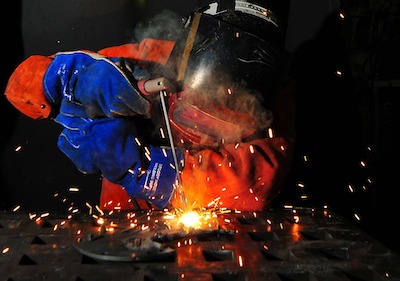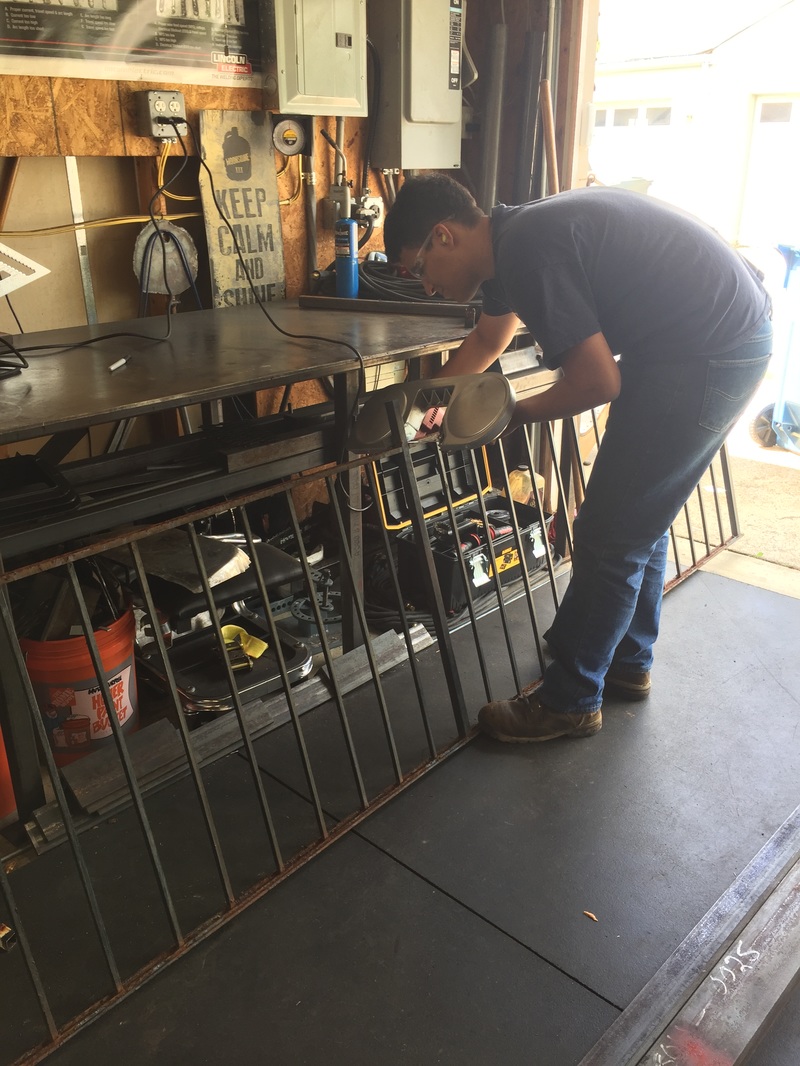Typical Welding Fixing Issues and Exactly How to Address Them Efficiently
Welding repair work commonly run into a series of issues that can jeopardize the integrity of the final item. Usual issues consist of inadequate penetration, porosity, and misalignment, to name a few. Each defect presents one-of-a-kind challenges that require specific strategies for resolution. Recognizing these problems is necessary for welders intending to enhance their outcomes and abilities. This discussion will explore these common welding repair service issues and reliable methods to resolve them.
Insufficient Infiltration
Poor infiltration occurs when the weld steel stops working to fully fuse with the base product, causing weak joints and prospective structural failures. This issue frequently originates from inadequate heat input, wrong electrode angle, or improper welding rate. Welders may run into insufficient infiltration due to a miscalculation of the essential specifications for a certain material thickness or type. In addition, contamination on the base product's surface can prevent effective bonding, aggravating the trouble. To resolve inadequate infiltration, welders must guarantee appropriate setups on their tools and maintain a clean work surface. Regular assessment of welds is recommended to identify any kind of deficiencies early, enabling for prompt adjustments and the avoidance of endangered architectural honesty in bonded assemblies.
Porosity
Porosity is an usual problem in welded joints that manifests as little gas bubbles entraped within the weld metal. This problem can endanger the stability of the weld, leading to minimized stamina and possible failing under stress. Welding. Porosity generally occurs from contamination, moisture, or improper welding strategies, which allow gases to escape right into the liquified weld swimming pool. To resolve porosity, welders ought to guarantee appropriate surface prep work, keep a clean workplace, and use appropriate welding specifications. In addition, choosing the best filler material and shielding gas can alleviate gas entrapment. Normal assessment and testing of welds can help identify porosity early, ensuring prompt corrective activities are taken, therefore protecting the high quality and dependability of the bonded structure
Misalignment
Imbalance in welding can develop from numerous variables, including improper setup and thermal expansion. Recognizing the origin is necessary for effective resolution. Numerous improvement strategies are readily available to straighten components and assure structural honesty.
Reasons for Misalignment
Welding misalignment frequently originates from a range of underlying concerns that can jeopardize architectural integrity. One key reason is inappropriate fit-up of elements prior to welding, which can lead to voids and irregular surface areas. Variants in thermal development during the welding process can likewise cause distortion, particularly if the materials being joined have different coefficients of growth. Additionally, inadequate fixturing and clamping may stop working to hold elements securely in area, resulting in movement throughout welding. Improperly kept devices, consisting of welding makers and tools, might present inconsistencies in the weld grain, additional adding to imbalance. Driver error, stemming from insufficient training or experience, can also play a significant duty in creating misaligned welds.

Improvement Methods Available
Resolving misalignment efficiently calls for a combination of corrective methods tailored to the specific concerns handy. One usual technique is the use of jigs or components to hold elements in the correct placement during welding, making certain consistent alignment. Additionally, preheating the materials can assist minimize distortion and enhance fit-up. For considerable misalignment, mechanical adjustment techniques, such as using hydraulic jacks or clamps, can be utilized to deal with the setting prior to welding. Post-weld warm treatment might additionally be needed to alleviate stress and anxieties created by imbalance. Finally, mindful examination and adjustment throughout the arrangement phase can stop misalignment problems from coming to be significant issues, promoting a smoother welding process and boosting overall structural stability.
Distortion
Distortion is a common difficulty in welding that can arise from numerous variables, consisting of unequal cooling and heating. Understanding the root causes of distortion is vital for implementing reliable prevention methods. Addressing this problem not only enhances architectural integrity but additionally enhances the total quality of the weld.
Reasons for Distortion
When based on the intense heat of welding, materials often go through modifications that can result in distortion. This sensation primarily arises from thermal development and tightening during the welding procedure. As the weld area warms up, the material broadens; upon air conditioning, it acquires, which can produce interior stresses. In enhancement, unequal home heating across a workpiece can exacerbate these tensions, causing warping or flexing. The kind of product additionally plays a substantial duty; steels with differing thermal conductivity and coefficients of growth might react in a different way, resulting in uncertain distortions. Furthermore, poor joint layout and inadequate fixturing can contribute to imbalance during welding, boosting the chance of distortion. Recognizing these causes is important for effective welding repair service and avoidance approaches.
Avoidance Techniques
Effective avoidance strategies for distortion during welding emphasis on managing heat input and making sure correct joint design. Keeping a constant warm input aids to reduce thermal development and tightening, which can bring about distortion. Using techniques such as pre-heating the workpiece can likewise decrease the temperature slope, advertising consistent heating. Furthermore, choosing proper joint layouts, such as T-joints or lap joints, can improve stability and reduce anxiety focus. Executing appropriate fixturing to safeguard the workpieces in position further help in maintaining placement during the welding process. Lastly, staggered welding series can disperse warmth much more evenly, preventing localized distortion. By using these strategies, welders can substantially lower the likelihood of distortion and enhance the general top quality of their welds.
Cracking
Breaking is an usual problem run into in welding fixings, usually resulting from various variables such as inappropriate cooling rates, product option, or inadequate joint preparation. The incident of cracks can considerably endanger the stability of the weld, resulting in potential failings throughout operation. To resolve this issue, welders have to first analyze the root causes, ensuring that materials are compatible and suitably chosen for the specific application. In addition, controlling the cooling price throughout the welding process is important; quick cooling can generate stress and result in fracturing. Appropriate joint style and preparation additionally add to reducing the danger. Implementing these approaches can enhance weld high quality and resilience, inevitably lowering the chance of splitting in completed weldments.

Incomplete Blend
A significant concern in welding repair work is insufficient fusion, which happens when the weld steel does not sufficiently bond with the base product or previous weld passes - Belgrade Fabrication. This defect can lead to weak points in the joint, possibly jeopardizing the honesty of the bonded structure. Variables contributing to insufficient fusion consist of not enough warm input, incorrect welding strategy, and contamination of the surfaces being joined. To resolve this concern efficiently, welders must guarantee correct pre-weld cleansing and surface prep work, as well as readjust their welding specifications to attain adequate penetration and fusion. Normal examination throughout the welding procedure can also help recognize incomplete combination early, permitting timely corrective steps to improve the total top quality of the weld
Overheating
While welding repairs can enhance structural stability, overheating offers a significant obstacle that can cause material deterioration. Too much warmth throughout welding can alter the mechanical residential or commercial properties of metals, leading to lowered her comment is here stamina, enhanced brittleness, and warping. This sensation is specifically important in high-stress applications where structural reliability is critical. Determining overheating can include visual inspections for discoloration or distortion, as well as monitoring temperature during the welding procedure. To reduce the threats linked with overheating, welders should utilize proper methods, such as controlling heat input, adjusting traveling speed, and making use of ideal filler products. Additionally, carrying out pre- and post-weld heat therapies can aid recover material homes and enhance the total top quality of the repair service, guaranteeing lasting performance and safety.
Often Asked Concerns
What Are the Typical Signs of a Welding Issue?

Just How Can I Examine My Welds for High quality?
To check welds for high quality, one can use visual evaluations, ultrasonic testing, and radiographic techniques. Each strategy guarantees architectural integrity, determines problems, and validates adherence to defined standards, inevitably boosting the reliability of the bonded joints.
What Safety Safety Measures Should I Take While Welding?
When welding, one ought to focus on security by using appropriate personal safety equipment, guaranteeing appropriate ventilation, securing combustible materials away, maintaining a clean work area, and recognizing surroundings to stop injuries and accidents.
Can I Fix a Weld Without Renovating the Entire Joint?
Fixing a weld without remodeling the whole joint is feasible, relying on the damage (Welding). Methods such as grinding, adding filler product, or making use of a welding process can properly attend to details problems while preserving the surrounding structure
What Equipment Are Vital for Effective Welding Repair Works?
Necessary devices for reliable welding repair services include a welding machine, wire brush, mill, protective gear, clamps, and filler materials. Each tool plays an important duty in making sure high quality and safety and security during the repair service procedure. Porosity commonly emerges from contamination, moisture, or inappropriate welding methods, which enable gases to get away right into the molten weld swimming pool. Inadequately conserved devices, consisting of welding machines and devices, may present disparities in the weld grain, more contributing to misalignment. When subjected to the intense warm of welding, materials usually undertake adjustments that can lead to distortion. Fracturing is a common issue experienced in welding repair this article services, typically resulting from numerous aspects such as inappropriate cooling prices, product choice, or insufficient joint prep work. A significant concern in welding repair work is insufficient combination, which occurs when the weld metal does not adequately bond with the base material or previous weld passes.